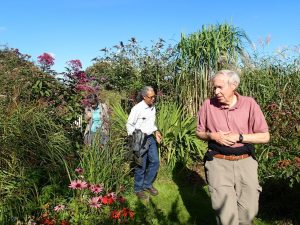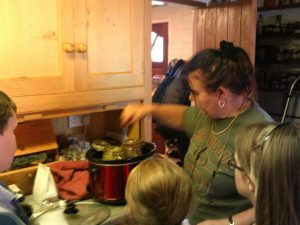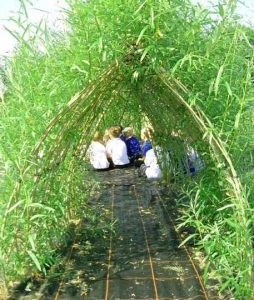
Wildlife Garden Open Day
I opened my garden to the public for a wildlife garden experience on a Saturday afternoon at the beginning of September. The sun made all the difference! Children were encouraged to come and get involved in pond-dipping, moth-trapping, looking down a microscope at tiny creatures in soil and water-butt water and collecting seeds. It was also the peak flowering time of my national collection of Eupatorium, so adults were able to come and view all

Activites to Dye for!
Chemicals in the garden – they have always been there! I had the kids’ Wildlife Trust WATCH group here last weekend; we had a go at using native dye plants like Woad, Weld and Madder that I grow. Interestingly a lot of dye plants are good nectar sources for insects when they flower. But Woad has to be used as the leaves in its first year of growth and doesn’t flower until its second year.

Live Willow-Work with Schools
Winter is the time to use live willow, and get your kids outside having fun and keeping warm while they build a den for themselves. Living willow takes root so easily in damp ground that you only need to make a hole with a metal rod (at least a foot deep) and push the dormant willow stems in. Only problem is if you have stony ground – so review where you want to make your

Who was Mother Shipton?
I often wondered why the moth was called this. The apparent picture on the wing of Callistege mi (also known as Euclidia mi) like an old hag’s face, was pointed out to me, but I didn’t know who it was named after until I came across a little book one summer while sorting out my parents’ house. It seems she was born a deformed girl named Ursula in Knaresborough, Yorkshire in 1488; ‘The prodigious Physiognomy